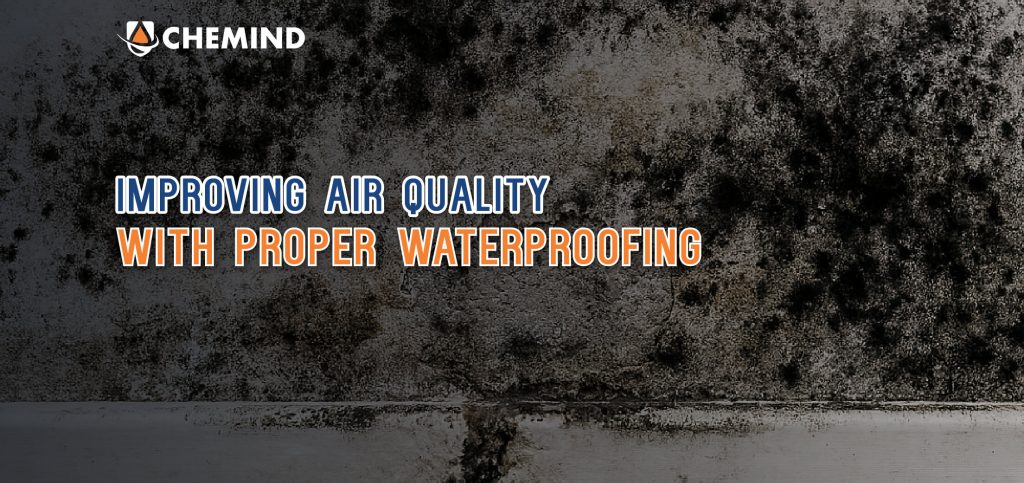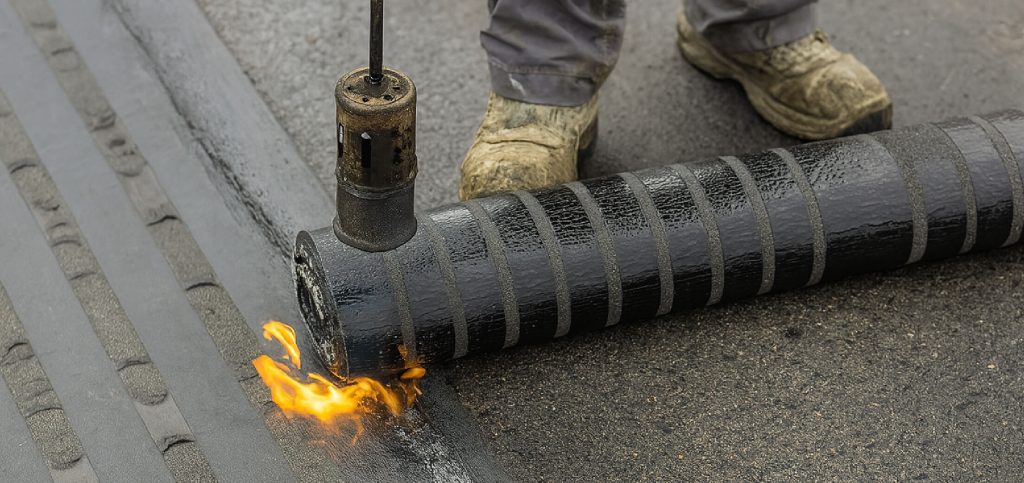
When most people think of waterproofing, they imagine preventing leaks or damp patches. But did you know that doing waterproofing right also plays a pivotal role in improving indoor air quality? At Chemind Industries, we see this connection all the time — imperfect waterproofing leads to moisture, mold, and stale air. In this article, we’ll show you how proper waterproofing helps your home or building breathe cleaner.
Why Waterproofing Matters to Air You Breathe
Moisture doesn’t just damage walls and floors — it sets the stage for mold growth, mildew, and fungal spores. These airborne contaminants trigger allergies, respiratory problems, and long-term health risks.
When waterproofing fails, humidity creeps in behind walls or under slabs, creating damp pockets that are perfect for mold. Even if you don’t see water, those unseen damp zones degrade indoor air. Several properties have found that once they sealed their basement or foundation leaks, occupants immediately noticed less mustiness and clearer breathing.
Proper waterproofing acts as a barrier — it prevents moisture ingress that otherwise leads to poor indoor air. It also protects insulation and building materials, keeping them dry and free from decay that produces off-gassing or volatile organic compounds (VOCs).

How Waterproofing Improves Air Quality - Key Ways
- Reducing Mold & Mildew Growth
Moisture is the prime culprit in mold proliferation. Proper waterproofing blocks moisture sources, stopping mold before it has a chance to thrive. Less mold means fewer spores in your living or working air. - Keeping Building Materials Dry
Wood, drywall, insulation — once these get damp, they degrade and release particles or chemicals. A solid waterproofing system keeps these materials stable, reducing off-gassing and dust. - Controlling Humidity Levels
Good waterproofing reduces humidity infiltration. Lower humidity makes your HVAC systems more effective, helps your building feel fresher, and reduces reliance on dehumidifiers or constant air conditioning. - Reducing Airborne Pollutants from Damp Surfaces
Damp walls and floors draw in dust mites, bacteria, and spores. Waterproofing seals these entry points, making your indoor environment cleaner and safer.
Real-World Example
At Chemind Industries, we believe that a waterproofing system is successful only when it integrates with a building’s health. Our systems aren’t just about stopping leaks — they’re about protecting air, interiors, and human wellbeing.
We recommend using combinations like Torch-On Membrane for exposed roofs, Brushcrete FX for indoor wet areas, and PU Injection for cracks. Each product is designed to adhere tight, flex with movement, and seal gaps completely.
But even the best product needs correct application. Our quality control, training, and technical support ensure that membranes extend over joints, corners, and penetrations — exactly where moisture lines try to re-enter.

Final Thought
If you’re serious about healthier indoor air — especially in humid places like Malaysia — waterproofing should be your starting point. A well-executed waterproof system not only protects your structure; it helps preserve the quality of the air you, your family, or your employees breathe every day.
At Chemind, our mission is simple: waterproof better, live healthier. Let’s build spaces that protect not just from water — but from what water brings along in the air.

